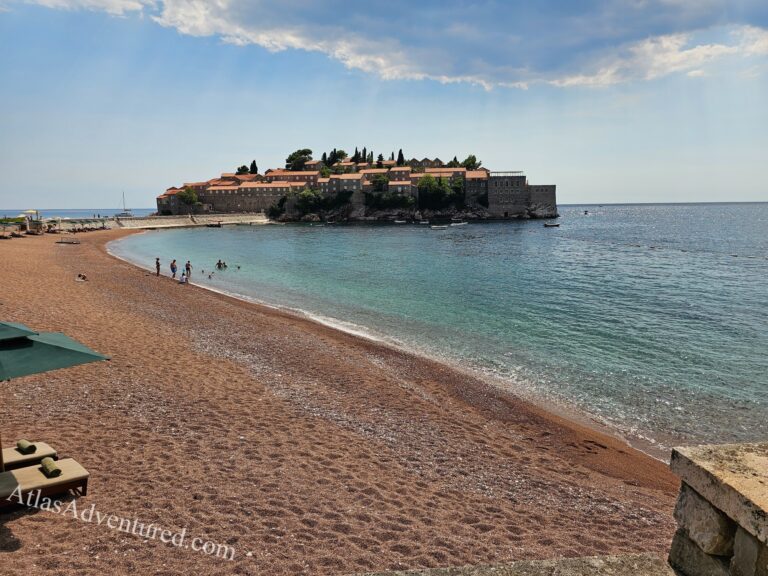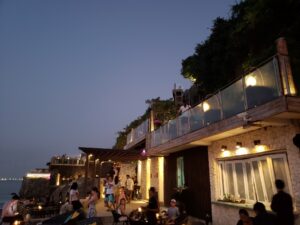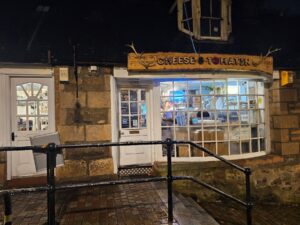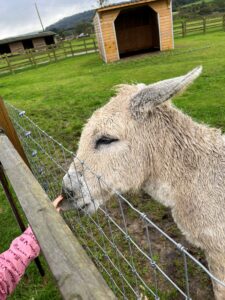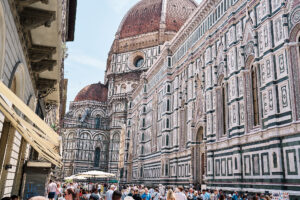- Is Montenegro Safe?
- General Safety Overview
- Crime Rates and Personal Safety
- Safety in Tourist Areas
- Safety of Transportation
- Travel Insurance and Safety
- Health and Medical Safety
- Beach and Water Safety
- Nature and Adventure Safety
- Food and Drink Safety
- Accommodation Safety
- Solo and Couple Travel Safety
- Safety Tips for Families with Children
- Cultural Etiquette and Local Laws
- In Conclusion
Is Montenegro Safe?
Yes! Nestled along the Adriatic coast, Montenegro might just be one of Europe’s best kept secrets – not only for its breathtaking landscapes but also for its reassuring safety. Our family’s six week stay in this enchanting country was nothing short of magical. We explored all of the hot spots, and then some. Toddler in tow, we meticulously combed through every bit of information we could find to ensure our adventure would be as safe as it was exciting. And Montenegro did not disappoint! From the cobblestone streets of Kotor to the serene shores of Budva, we discovered a place where safety harmonizes with adventure, allowing us to create family memories that will last a lifetime.
Here we compiled a breakdown of all the information that was vital to us before we committed to an extended stay in Montenegro.
General Safety Overview
When my husband suggested a six-week stay in Montenegro, I was hesitant. My limited knowledge painted a bleak picture of a post-Soviet, war torn nation – not exactly a comforting thought for relocating our family, especially with a toddler. However, I’ve learned that such apprehensions often stem from unfamiliarity rather than fact.
Montenegro, a country that didn’t even exist when I was a child, is now a place where adventure outweighs naivety, and where the beauty and the kindness of those living there is unmatched. It’s a nation in transition, finding its middle ground on the European safety index with common issues like pickpocketing and shoplifting.
As it stands on the threshold of EU membership, Montenegro’s commitment to enhancing safety and security is evident through collaborations with international bodies like the UNDP (United Nations Development Program). Moreover, its significant strides in political and economic reforms are recognized globally, ranking within the top 30 of the BTI (Bertelsmann Stiftung’s Transformation Index) which measures progress towards democracy and a market economy. The transformation is a testament to the country’s potential as a safe and promising destination for travelers and residents alike.
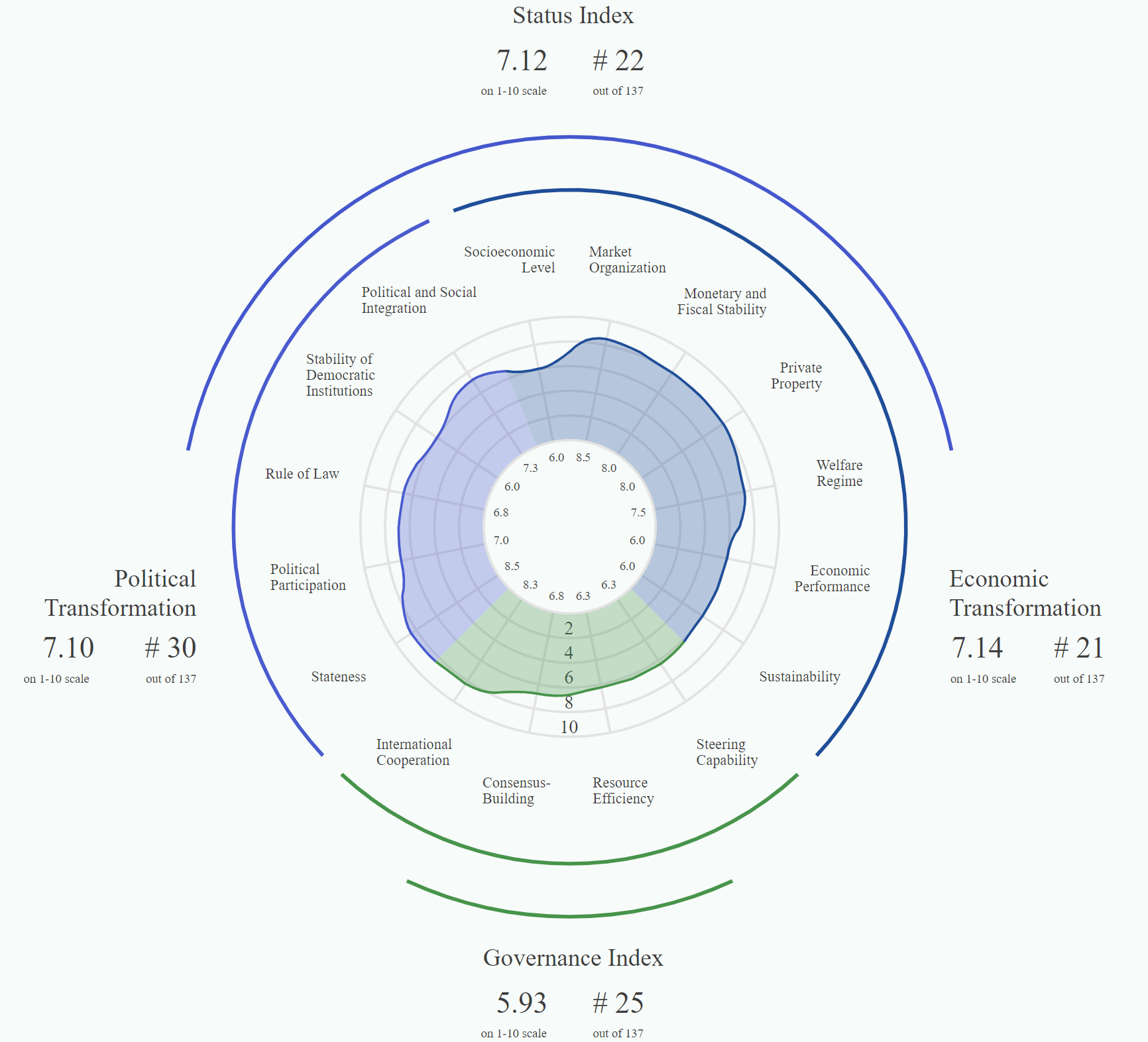
Crime Rates and Personal Safety
If you find yourself in Montenegro, you’re most likely visiting the touristy areas like Kotor, Herceg Novi, Tivat, etc. Petty crimes are more prevalent during peak seasons and not just in Montenegro. This is true for countries all over the world.
Traveling in Montenegro is generally safe, but here are some safety tips to ensure a pleasant experience:
- Be cautious of petty theft: Be smart! Use common sense and exercise caution. Keep important documents or personal items in your accommodation, or close to your body in a place no one but you can access. Don’t wave your expensive jewelry or wad of cash around all willy nilly. When walking through a crowd, keep your belongings close to you and your head on a swivel. Make eye contact with people around you. It displays confidence and reduces your chances of being targeted by criminals.
- Dress Modestly: Respect local customs by dressing appropriately, especially in religious sites. Don’t draw extra attention to yourself by wearing something super flashy.
- Manage Alcohol consumption: Obviously your senses are skewed while drinking. Drunk people are easy targets! Also, public drunkenness is considered to be in bad taste.
- Stay Informed: Keep up with the local news and alerts. Most stays and restaurants have WIFI available, or you could purchase a local internet sim card.
- 112 for General Emergencies
- 122 for Police
- 123 for Fire Department
- 124 for Ambulance
Montenegro is significantly safer than the United States overall and the majority of violent crime is not happening in the tourist areas. Here is a country to country comparison of crime livels:
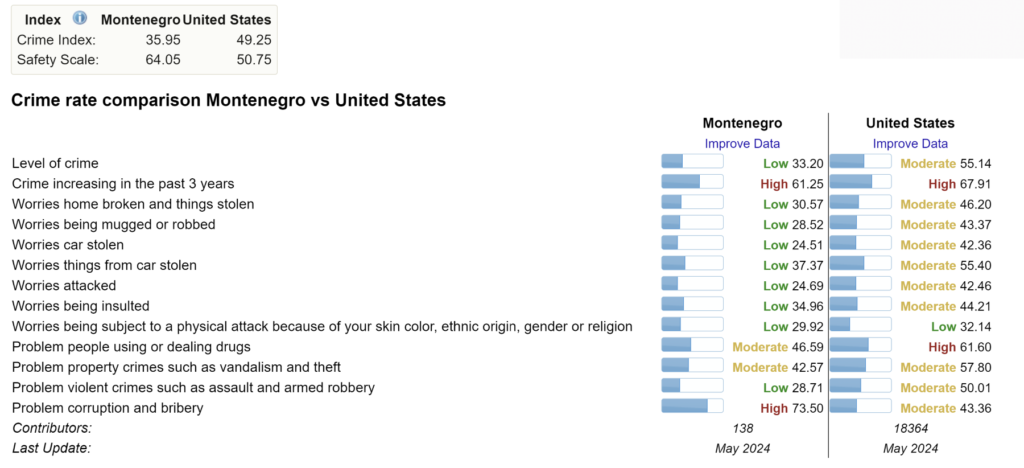
Safety in Tourist Areas
Montenegro is generally considered a safe and secure destination for tourists, with many cities offering a protected and stable environment. The country ranks high in terms of air quality and safety, and local authorities are dedicated to preserving a safe setting for all. Here’s an overview of safety in some popular tourist areas:
Kotor
- Crime Rate: Moderately low crime
- Safety Tips: Be cautious of beggars and pickpockets, especially in crowded areas. Carry minimal cash and valuables, and hold your belongings securely in your sight.
Herceg Novi
- Crime Rate: Very low level of crime
- Safety Tips: Exercise caution in crowded areas and on public transportation. Check local media and stay informed about any possible safety risks or natural disasters.
Tivat
- Crime Rate: Low level of crime
- Safety Tips: Violent crime is rare, but petty crimes can occur in crowded areas. Be mindful of your surroundings and use common sense about personal safety.
Budva
- Crime Rate: Low level of crime, with crime increasing in the past 3 years.
- Safety Tips: Watch out for theft, and be aware of your surroundings. Use reputable taxi services and ensure the taxi meters are on.
Thankfully, tourist hotspots aren’t the focal points for criminal activity here. In many places, it’s the bustling tourist destinations like Paris or Los Angeles where crime rates surge, but Montenegro flips the script. Unless your itinerary includes a stroll through a less affluent neighborhood in the heart of the country, there’s little cause for concern. When it comes to visiting popular destinations like Kotor, Herceg Novi, Budva, or Tivat, worries about crime aren’ts a major reasons to worry. Even so, it’s crucial for tourists to avoid unnecessary risks and remain vigilant, especially when exploring unfamiliar territory.

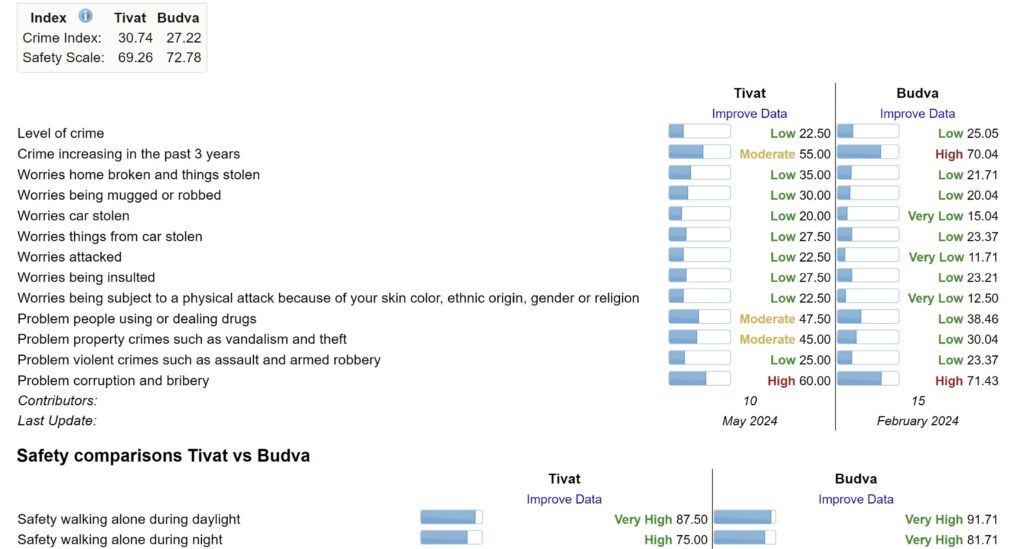
Local Initiatives
Montenegro has implemented several local initiatives to enhance safety for both residents and tourists. Here are some key efforts:
- Policing and Community Safety: The country prioritizes law enforcement and public safety measures, with municipal agencies working with residents to deter criminal activity and foster a safe atmosphere.
- Forensic Center Collaboration: The Forensic Center of Montenegro partnered with the United Nations Development Programme (UNDP) to improve the examination of explosive substances or materials and ensure safety standards are upheld.
- Safe Travels Initiative: Montenegro is part of the global Safe Travels initiative, which aims to ensure the health and safety of travelers. This includes robust security measures and effective law enforcement, particularly in popular tourist areas, to provide a heightened feeling of safety.
To check the crime rate in the city you plan on visiting, Click Here
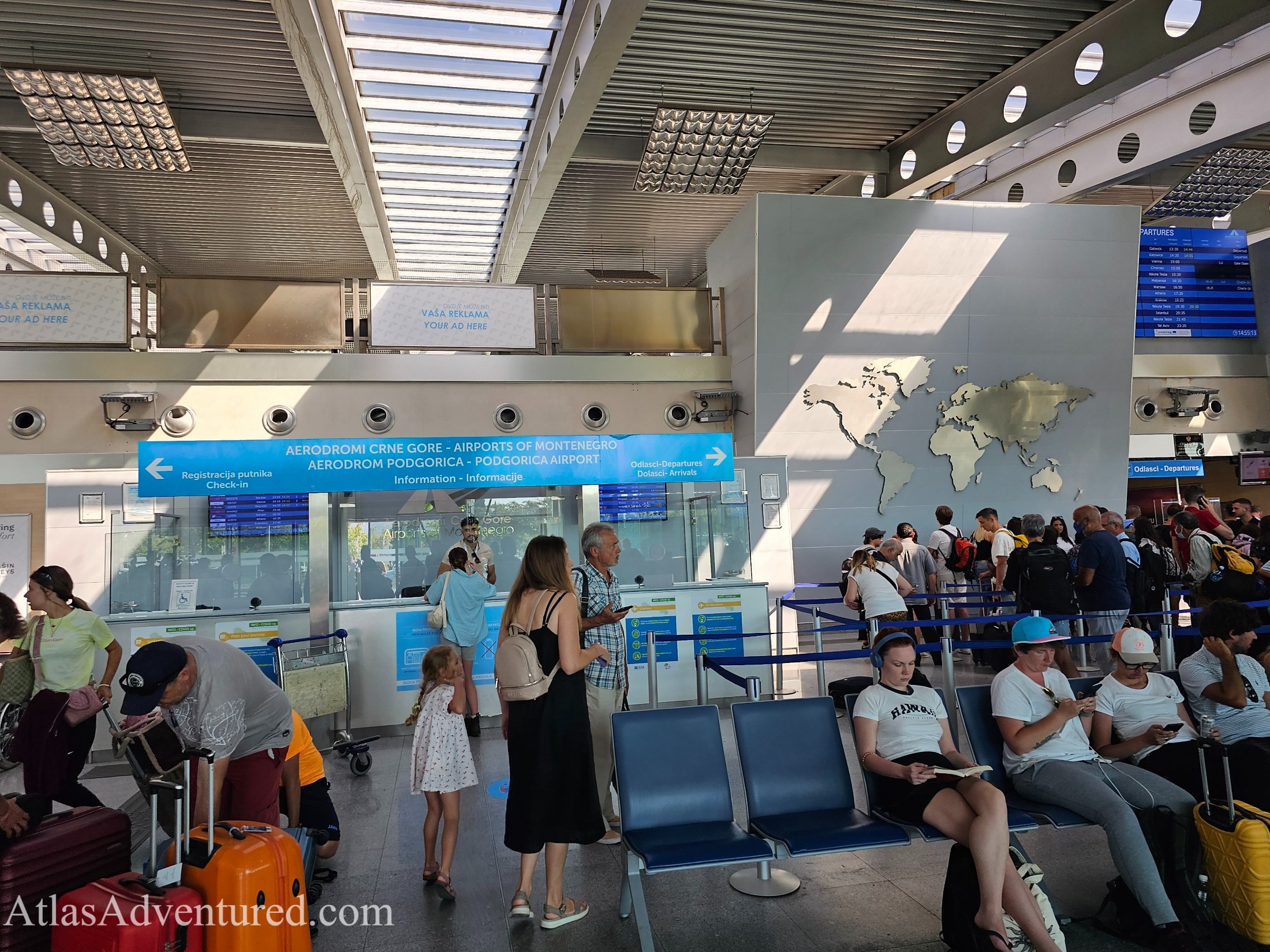
Safety of Transportation
We have used a lot of public transportation systems in a lot of different countries. Our family’s experience showed us that even though it may be a little chaotic, public transport in Montenegro is safe. During our six week stay in Montenegro, we dove into the local way of life, embracing every mode of public transport available. We rented a car for an unforgettable Balkan road trip, hailed taxis, and savored the scenic beauty from the windows of long bus rides (buses equipped with ash trays!)
Each type of transport taught us something new about Montenegro’s culture and the universal language of transit. From understanding the local traffic etiquette to interacting with cab drivers and rental agencies, we learned a lot about the country and its people. And through it all, we found Montenegro’s public transportation to be a safe passage to adventure!
Here are some tips when using public transportation in Montenegro:
Taxis
- Safe in terms that you and your belongings will be fine, but sometimes the cab driver will try to overcharge you
- Ensure the meter is running or agree on price beforehand! We took a taxi from the Tivat Airport to Kotor and were offered a whole range of prices for the ride. We took one that was somewhere in the middle. During our trip there was an insane amount of traffic and our driver was NOT happy. As we arrived he tried telling us it was going to be a much higher price, but we told him we only had the exact amount that we agreed on. He was not thrilled, but left without much fuss.
- Use reputable taxi services such as Red Taxi Podgorica or Taxi Travel Montenegro.
Car Rentals
- Always take before/after pictures and videos upon receiving your rental car, and do it during the inspection with the employee! They will see you do it and know not to charge you for some mysterious scratch that shows up after you leave.
- Do research about the area you will be driving in. Local traffic laws, unique driving customs, correct documentation for border crosses, etc.
- Rent from a reputable car rental agency.

Trains
- Be aware of your surroundings. Trains tend to rock me to sleep, so I always keep my belongings tucked in close to me.
- Keep belongings close when in train stations, especially if you have your wallet out to purchase a train ticket. Be quick and deliberate with your movements.
- Know where you are going! Have a map or the route you are on.
Buses
- Generally safe, common, and well-maintained. Remain vigilant about your belongings, especially while waiting at the bus station.
- Check bus station rules! When we took the bus, we were required to have a paper ticket. Luckily our AirBnB host was kind enough to print them for us as there was nowhere in town that would. There was also a platform fee for our particular ticket so be sure to check in upon arrival.
- Be early but also plan on your bus arriving late! Our bus (which was headed to the airport) was almost 30 minutes late. We were in no rush, but I could see the look of panic on others’ faces.
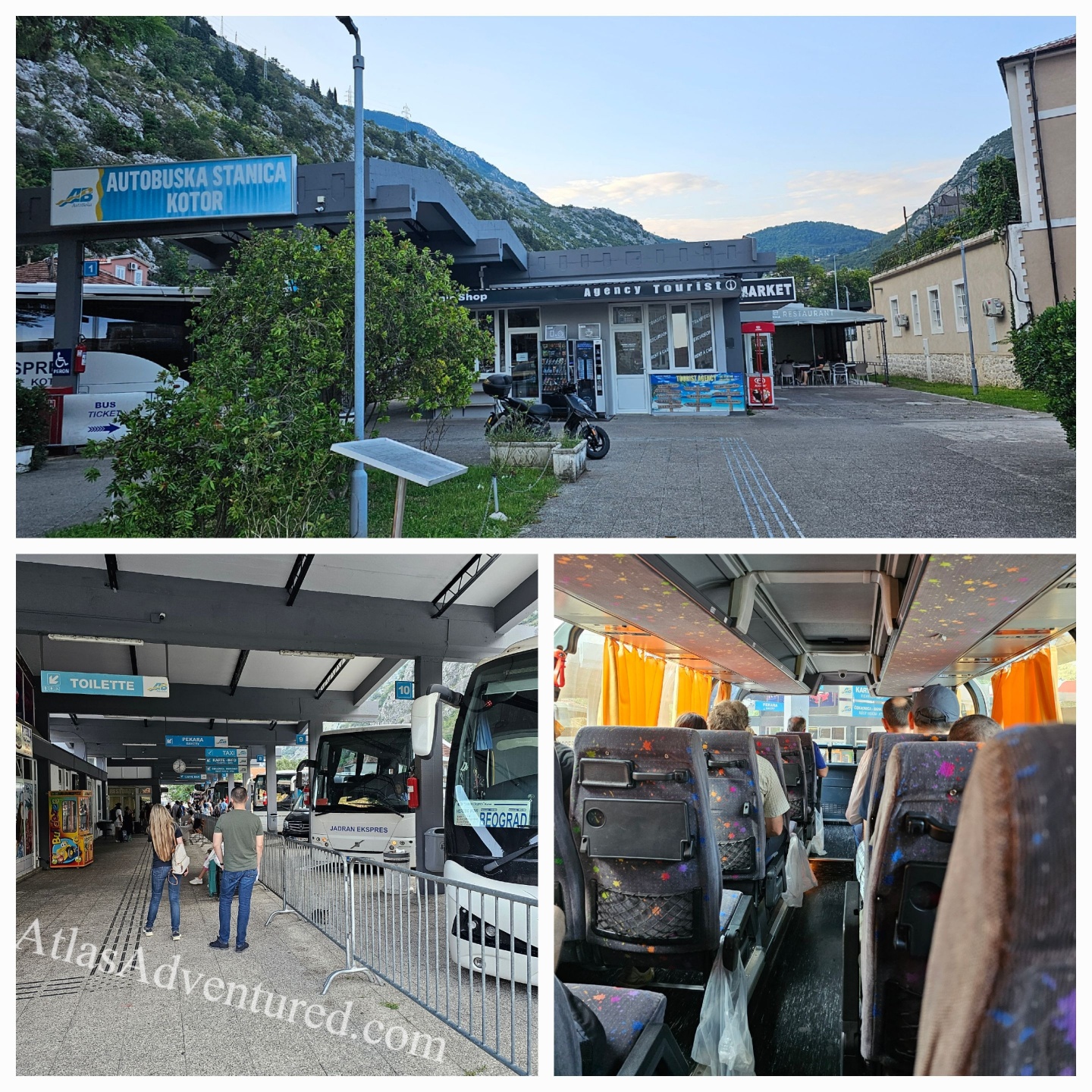
Key Traffic Laws In Montenegro
- Drive on the right hand side of the road.
- Headlights on! It’s mandatory to keep them on at all times, even during the day.
- Wear your seatbelt. Everyone in the vehicle must have theirs on.
- Speed Limit. Signs are well posted and generally 50 km/h in urban areas and 80-130 km/h on highways.
- Children 12 years old and under must be seated in appropriate child restraints.
- Don’t drink and drive. Duh.
- Using a cell phone while driving is prohibited, unless it is hands free.
Travel Insurance and Safety
Travel insurance is a crucial aspect of planning a trip to Montenegro, especially when it comes to ensuring safety and financial security of your family. While Montenegro is a relatively safe destination, unexpected events can occur, and having comprehensive travel insurance can provide peace of mind. Here is why it’s important:
- Health Emergencies: Should you or a family member require medical attention, travel insurance can cover the costs of hospital stays, doctor visits, and even ambulance transport.
- Trip Cancellations: If you need to cancel your trip due to unforeseen circumstances, a good travel insurance policy can reimburse you for prepaid expenses.
- Lost or Delayed Baggage: Insurance can provide coverage for the inconvenience and expense of lost or delayed luggage, ensuring you can replace the necessities.
- Emergency Evacuations: In the event of a natural disaster or civil unrest, travel insurance can cover the costs of getting you out of there.
Here are a few options for different types of travelers:
Solo Travelers:
- Stay covered while trekking the globe: Live your best life without fear of unexpected medical bills. Mold the plan around your specific needs to ensure access to health care if needed
Students:
- Don’t let your parents worry : Get comprehensive medical coverage for students abroad. It’s a popular choice for its balance of value and extensive coverage.
Couples:
- Protect you and your loved one: Provides excellent trip insurance options for couples with benefits that cater to both individuals.
Families:
- Peace of mind for the whole family: This insurance is great for families, especially those with young digital nomads in tow. This is the plan we use to cover our family and our full coverage was a fraction of the cost we pay in the states.
Health and Medical Safety
I wouldn’t say that Montenegro’s health and medical safety is the greatest, but at least it is available.
Montenegro’s healthcare system operates on a universal coverage principle, ensuring that a vast majority of the populace – exceeding 95% – benefits from health protection. 2022 marked a shift to a tax funded system, designed to extend comprehensive health services to every inhabitant. The standard of medical care is satisfactory, and individuals may encounter considerable direct payments for services, which form a substantial part of the overall health spending. The system is accessible, with an abundance of pharmacies and medical facilities, especially in urban and coastal areas that attract visitors.
For travelers, healthcare is generally accessible. Medical facilities are available, but it’s advisable to have travel insurance that covers healthcare costs, as paying out-of-pocket can be expensive. For minor ailments, pharmacies are well stocked, affordable, and pharmacists can help you find exactly what you need. Refer to the Emergency Numbers above.
If you are traveling with a child, check if your child’s routine vaccines are up-to-date before traveling.
Compare different International Travel Insurance options
Tips for travelers with specific health conditions planning to visit Montenegro:
- Know the Facilities: Familiarize yourself with the healthcare facilities near the areas you’ll be visiting, especially if you have a pre existing condition that may require immediate medical attention.
- Carry a Medical Kit: Ensure you pack a well stocked medical kit, complete with any prescribed medications, duplicates of your prescriptions, and a selection of non-prescription remedies that might come in handy.
- Health Insurance: Make sure that your health insurance is all-encompassing, providing coverage for medical evacuation and any necessary treatments during your stay.
Pharmacies
Pharmacies are widely available, with some operating 24/7, and some closed on Sundays. We had a firsthand experience with a pharmacy in Kotor; it was straightforward and surprisingly affordable. Typically, pharmacies are located adjacent to hospitals or health centers, stocked with a wide range of medications, both prescription and over-the-counter.
Montenegro’s dedication to health tourism is evident in the ongoing enhancement of its medical service infrastructure, striving to deliver high quality care. Our own experience was limited to a pharmacy visit, but it was reassuring to know that comprehensive medical attention was readily accessible if needed. There were also CVS-like stores in the shopping mall that had many of your basic first-aid and OTC items available.

Beach and Water Safety
Montenegro’s coastline is a collage of pebbled beaches and crystal clear waters that attract people from around the globe. As seasoned travelers who have embraced the world’s wonders with our young explorer, we found a slice of paradise in Kotor. For six weeks we made the Adriatic our backyard, knowing that safety is as crucial as the joy of swimming.

*Don’t forget to bring a towel to the beach! Most people lay out on the sidewalks since the rocky beaches are not so comfortable!
In this section, we’ll share essential tips and insights on how to navigate Montenegro’s beaches safely. From understanding local water currents to knowing the best times for a swim, we aim to equip you with the knowledge to make your aquatic experiences both memorable and secure.
Safety Tips
- Swim in Designated Areas: Always choose beaches with lifeguards on duty and swim only in areas marked safe. A green flag means it’s safe to swim. A red flag means do not swim.
- Water Shoes: Many beaches in Montenegro are pebble beaches
- Buddy System: Never swim alone. Even experienced swimmers should have company, as conditions can change rapidly.
- Rip Current Awareness: Strong currents can occur. Learn how to spot and escape rip currents. If caught in one, swim parallel to the shore until free of the current.
- Weather and Tide Checks: Before heading out, check the local weather and tide schedules to avoid being caught in dangerous conditions.
- Protective Gear: Use life jackets when boating and ensure children have appropriate flotation devices when near the water.
- Sun Protection: Apply waterproof sunscreen before arriving and reapply regularly. The Mediterranean sun can be intense!
- Water Quality: Occasionally, water pollution can be an issue, so be sure to check local advisories.

Currents and Swimming Advisories
- Bay of Kotor: Due to its protected location, the Bay of Kotor offers several safe swimming locations. The sea temperatures in summer vary from 72-77°F. However, be cautious of boat traffic and swim in marked zones.
- Adriatic Coastline: The water quality is excellent, but it’s important to stay informed about local swimming advisories.
Equipment Safety
- Jet Skis: A personal watercraft license is required to operate a jet ski in Montenegro. Always wear a life jacket and avoid driving through safe swim zones.
- Scuba Diving: Only trained divers should explore dive sites. Many scuba diving centers offer equipment and courses for all levels. Be sure you dive with a certified professional.
Remember, while Montenegro’s beaches offer a serene escape, the ocean is a dynamic environment. By following these precautions, you can help ensure that your family’s beach experiences are as safe as they are memorable. Be sure to check any local signs that might inform you of beach rules and etiquette. Enjoy your time in the beautiful waters of Montenegro with peace of mind!

Nature and Adventure Safety
Montenegro is a haven for outdoor enthusiasts, offering a variety of activities that cater to all levels of adventure seekers. Hiking and climbing are very popular in this area, and for good reason. While the call of the wild is irresistible, it’s essential to navigate these natural wonders with care.
So let’s talk about staying safe while exploring Montenegro’s great outdoors. We want to make sure you have a great time without any hiccups, or at least be prepared in case something does happen. Being prepared is the best thing you can do for yourself. Enjoy your adventure!
Hiking and Climbing
Montenegro’s rugged terrain is perfect for hiking and climbing. The nation is home to an extensive network of trails, spanning more than 3,000 kilometers, including 1,480 km of well organized and clearly marked paths. For trail maps and guides, websites like AllTrails and Komoot offer detailed maps and user reviews. A popular spot is Durmitor National Park, particularly from July-September. The “Durmitor Ring” and the Curevac viewpoint come highly recommended for those looking to experience breathtaking treks and scenic tours.
Equipment Rental
There are several options available for outdoor activity gear. Montenegro+ offers tours and equipment rentals for activities such as stand-up paddleboarding, kayaking, hiking, and cycling. Check with local adventure agencies for the necessary equipment, especially for climbing. Certain popular climbing spots, like Pirlitor, require you to have your own ropes, harnesses, and quickdraws.
Safety Tips:
- Avoid Dangerous Areas: Stick to well-marked trails and avoid venturing into unknown territories without a guide.
- Check weather conditions: Plan ahead. Also check the weather right before heading out, as sudden changes can make certain areas unsafe.
- Respecting Wildlife: Keep a safe distance from wildlife. Do not feed or attempt to touch any animals. Stay on marked paths to minimize your impact on their natural habitat.
- Emergency Contacts: It’s crucial to have the local emergency numbers handy. Dial 112 for general emergencies. 122 for police, 123 for fire department, and 124 for ambulance services.
Family Friendly Hiking Trails
- Black Lake, Durmitor National Park: A peaceful and easy 3.5 km loop around Black Lake. The trail is clearly marked and flat, perfect for families with small children or those looking for a leisurely stroll.
- Lovcen Mountain and National Park: Although certain routes in the park present a bit of a challenge, there are also family friendly trails that everyone can enjoy. It is a harmonious blend of historical landmarks and natural beauty, highlighted by the Njegos Mausoleum and its stunning panoramic views.
- Ladder of Kotor: This ancient trail provides a stunning panorama of the Bay of Kotor. While it poses some challenges, it’s an excellent adventure for families with older children who appreciate an exhilarating climb.
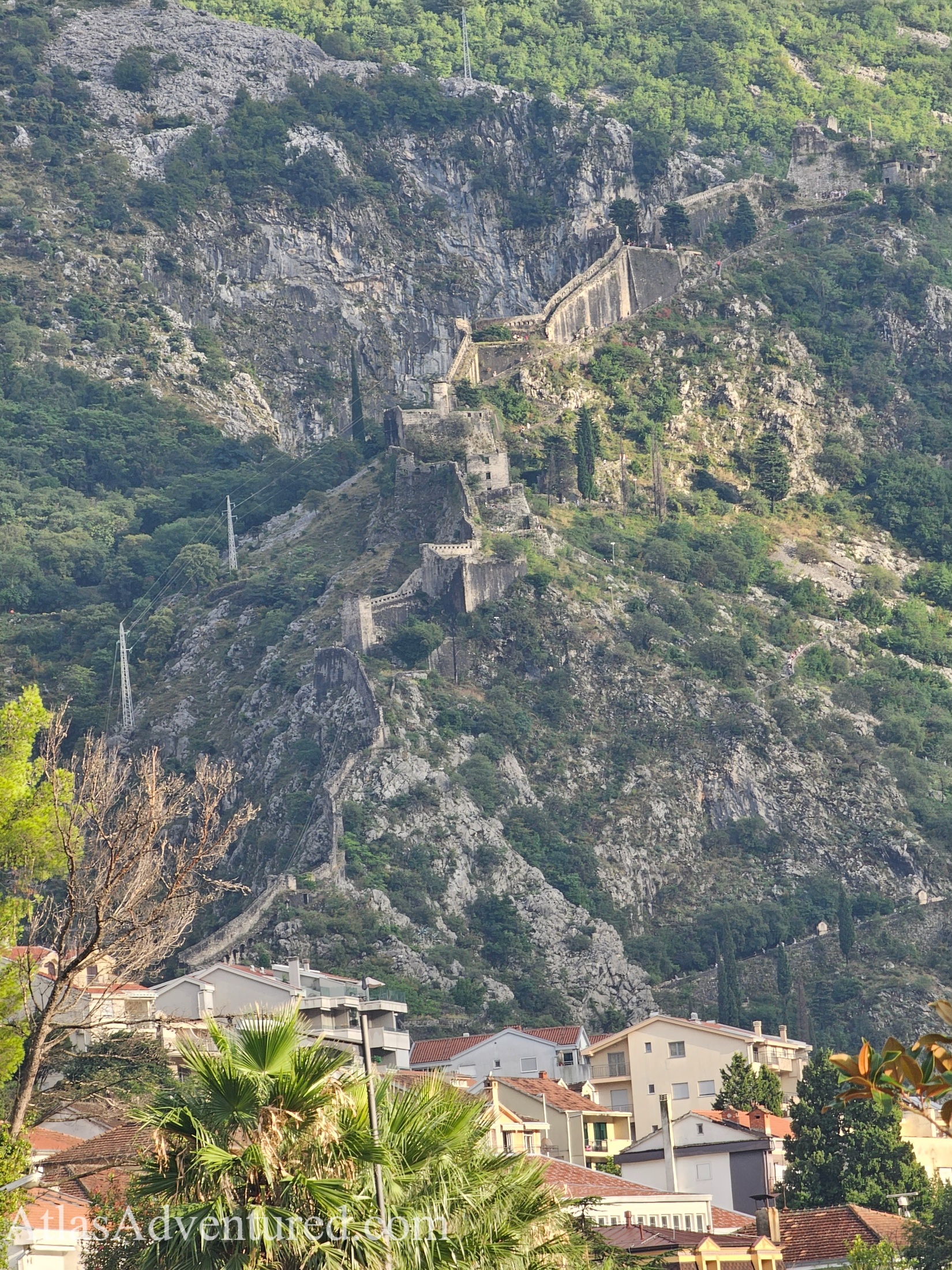
When hiking with your family, especially with a young child, it’s important to:
- Choose trails that match your family’s fitness level.
- Bring plenty of water, snacks, and a first-aid kid.
- Dress appropriately for the weather and wear sturdy footwear.
- Respect the wildlife and natural surroundings by staying on marked trails and not leaving any litter behind.
Food and Drink Safety
If you are planning to explore Montenegro via your tastebuds, then you are in for a treat. The country’s cuisine is as diverse as its rich history, offering a feast for the senses. When traveling solo or with your family, it is important to prioritize food and drink safety (no one wants to spend their entire trip in the bathroom!). Montenegro boasts an array of exquisite dishes, and the tap water is generally safe to consume in urban areas. However, when venturing into less populated regions or sampling street food, it’s wise to choose establishments that appear clean and are popular among locals. It’s all about enjoying delicious food with peace of mind!
Important tips when eating and drinking in Montenegro:
- Tap Water Safety: Generally, tap water in Montenegro is safe to drink. Urban areas like Podgorica, Budva, and Kotor have high quality water. It is advisable to be cautious in rural areas or older buildings. If ever in doubt, opt for bottled water or boil tap water for at least one minute before drinking.
- Dining Out: When eating out, check the cleanliness of the restaurant and don’t forget to check the restrooms. Keep your eyes on the waitstaff. Do you see them practicing good hygiene? Are there a ton of bugs? Does it smell bad? Look at reviews online or ask locals for recommendations. Preferably both. (If anything seems off, trust your gut and find another restaurant. Your gut will thank you later.)
- Street Food: While street food can be a great way to explore local flavors, it’s important to be cautious. Opt for vendors that have a high turnover of food and where you can see the food being cooked. This ensures freshness and reduces the risk of foodborne illnesses.
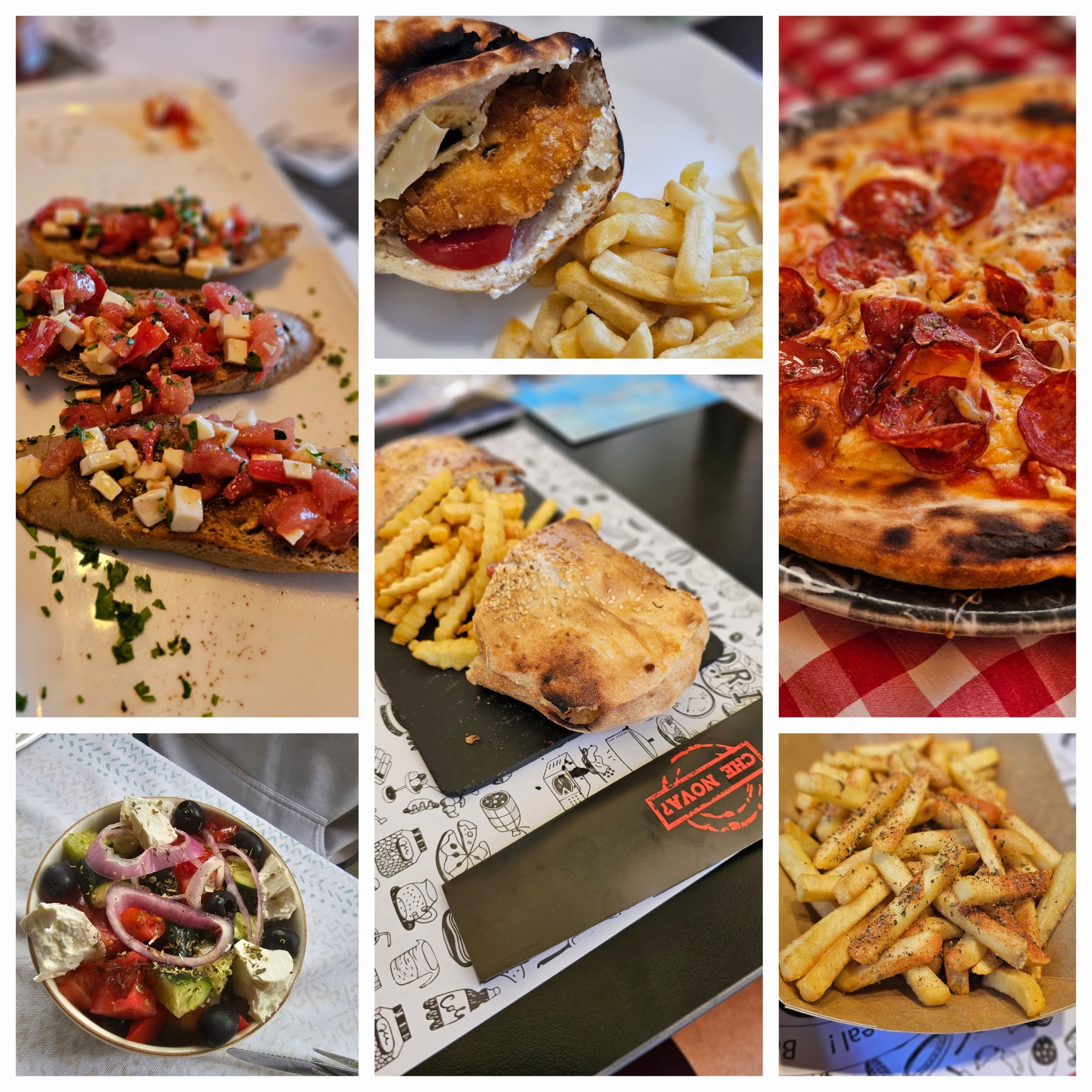
Food Safety Laws
In Montenegro, the commitment to maintaining the safety of food and beverages is taken seriously. The country has implemented a comprehensive set of food safety regulations designed to ensure the well-being of both locals and visitors. These laws ensure that all food products are free of dangerous substances, toxins, or bacteria. These rules apply to the entire food supply chain, from production to distribution. As much as I would like to think that every food establishment in Montenegro (or in the US) follows these rules, I am not that naive and still take caution when eating and drinking in a new country.
Local Favorites
When we visited Montenegro, I was very unsure what to expect with the food. I found out that it’s mostly meat. Meat meat meat. Seafood and cheese are the other main food groups in the area. Most touristy areas will have restaurants that offer a little bit of everything such as cheeseburgers, pizzas, sandwiches and gyros.
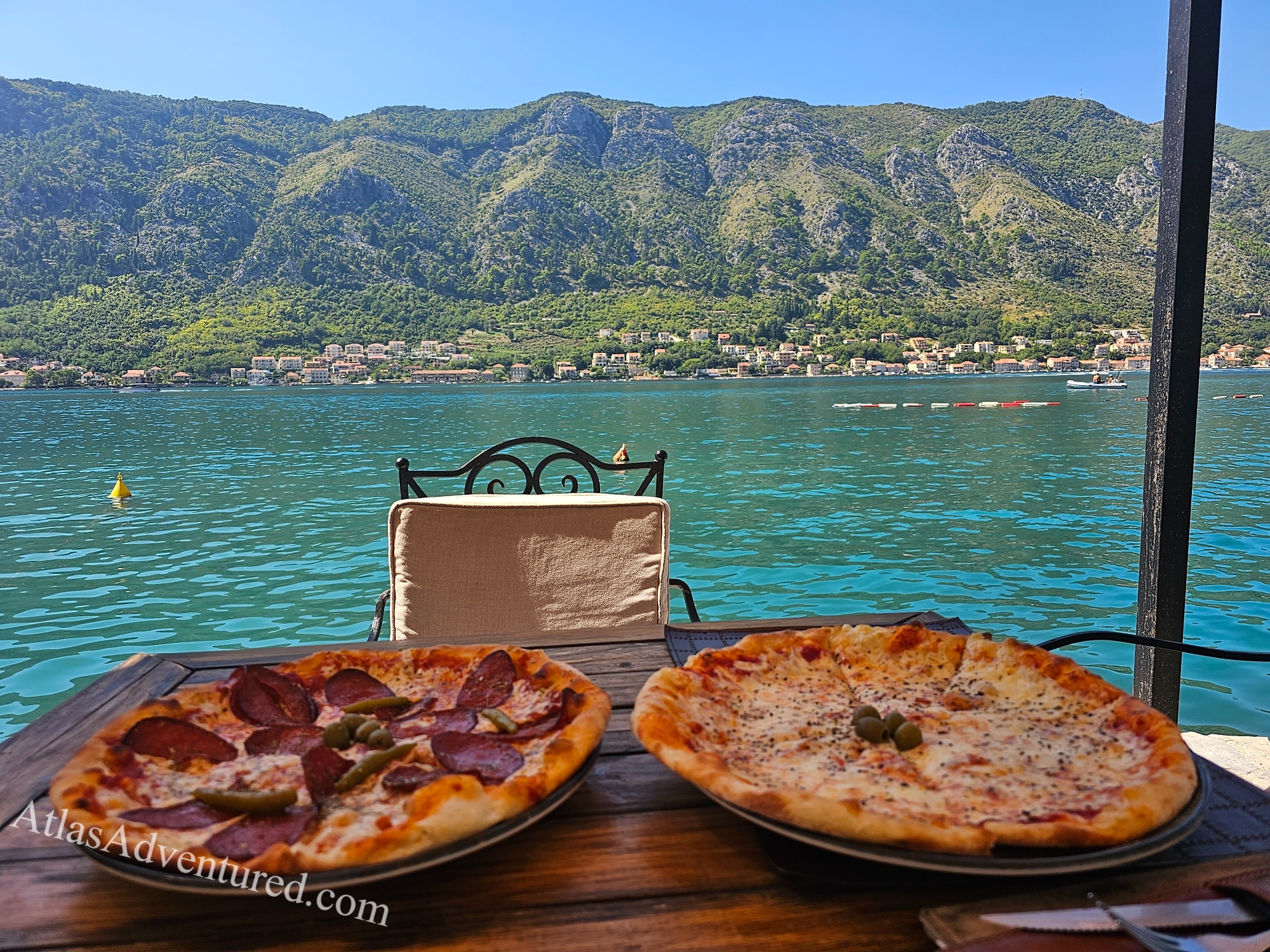
Montenegro’s cuisine is a blend of Mediterranean zest and Balkan heartiness. The coastal areas serve up fresh seafood and use olive oil liberally, reminiscent of Greek and Italian flavors, while the mountainous regions offer robust, meaty dishes often accompanied by dairy products. For a true taste of Montenegro, you should try these local faves:
- Njeguški pršut: A dry-cured ham typically served uncooked (think Italian prosciutto)
- Burek: Our absolute favorite! A phyllo pastry pie filled with a variety of ingredients such as cheese, meat, spinach, or potatoes.
- Ajvar: A roasted red pepper dip usually served alongside meat dishes.
- Black Risotto: Colored using cuttlefish ink, this coastal favorite can be found at most seafood restaurants.
- Rakija: The national alcoholic drink! A strong brandy served neat, with the most popular flavor being plum. Offered as a welcome drink in most Montenegrin homes.
Accommodation Safety
When planning an adventure to Montenegro, finding a safe haven to rest and recharge is crucial. Security and comfort should go hand in hand while traveling. Here I will provide you with some practical advice on identifying secure lodgings, understanding the importance of verified reviews, and utilizing trusted booking platforms. With these insights, you can ensure that your stay in Montenegro is not just memorable, but also provides the peace of mind that every traveler deserves.
Follow these tips for ease of mind when checking into your next stay:
- Research and Select Reputable Accommodations: Start by looking for accommodations with positive reviews and high ratings on trusted booking sites. Platforms like Booking.com are very popular, trustworthy, and provide a number of options and user feedback.
- Verify Security Measures: Check if the accommodation has security measures in place such as 24/7 reception, surveillance cameras, and secure locks on doors and windows. Many properties in Montenegro prioritize guest safety and will have these features listed in their descriptions.
- Read Recent Reviews: Checking the latest reviews can offer an up-to-date picture of the accommodation’s safety standards. Pay attention to comments about the cleanliness of the stay, the safety of the neighborhood, and how attentive the staff is to safety issues.
- Confirm Registration with Local Authorities: In Montenegro, accommodations are required to register guests with the local police, which is often handled by the accommodation provider. *Be sure to pay the tourist tax, or that it has been included in your stay’s total price.*
- Use Secure Booking Platforms: Book your stay through tried and trusted platforms that offer customer support and secure payment options. This will also provide a point of contact in case there are any issues.
- Communicate Directly with the Property: Before booking, reach out to the property. Ask any specific questions about their property and safety measures. This direct communication can also help verify the legitimacy of the listing.

Solo and Couple Travel Safety
Montenegro is a beautiful country with a lot to offer solo travelers and couples, including those from the LGBTQIA+ community. After Montenegro adopted a law on same-sex unions in 2020, two women became the first couple to marry under this law in March 2021. However, the government has been urged to enhance the implementation of its own strategy in order to secure a better quality of life for LGBTQIA+ individuals. Here are some tips and resources that could be useful when visiting:
Challenges and Precautions:
- Language Barrier: While Montenegrin is the official language, English is widely spoken in tourist areas. Serbian, Croatian, Bosnian, and Albanian are also recognized. However, it is good to learn a few basic phrases or have a translation app handy.
- Navigation: Some remote areas may not have clear signage. It’s advisable to have a reliable GPS or map app on your phone. Get old school and print out some maps (MapQuest anyone?)
- Healthcare: Pack necessary medication and familiarize yourself with the local healthcare system. I highly recommend having travel insurance.
- Safety: Montenegro is generally safe, but like anywhere, always stay alert, especially at night. Keep to well-lit and populated areas.
- LGBTQIA+ Acceptance: Although the law may offer certain protections, this doesn’t always reflect the attitudes of society at large. Travelers in the LGBTQIA+ community should be mindful of the prevailing cultural norms, particularly in less urbanized areas where traditional views are more prevalent.
Transportation Options:
- Buses: Buses are a popular mode of transportation, but be warned they are ALWAYS FULL! Especially in peak seasons. While we were in Kotor, we waited for an hour for the bus, watching ones go by every 15 minutes that were packed with people. We couldn’t find much information online with bus timetables but here is a picture we took from one of the bus stops for their summer schedules
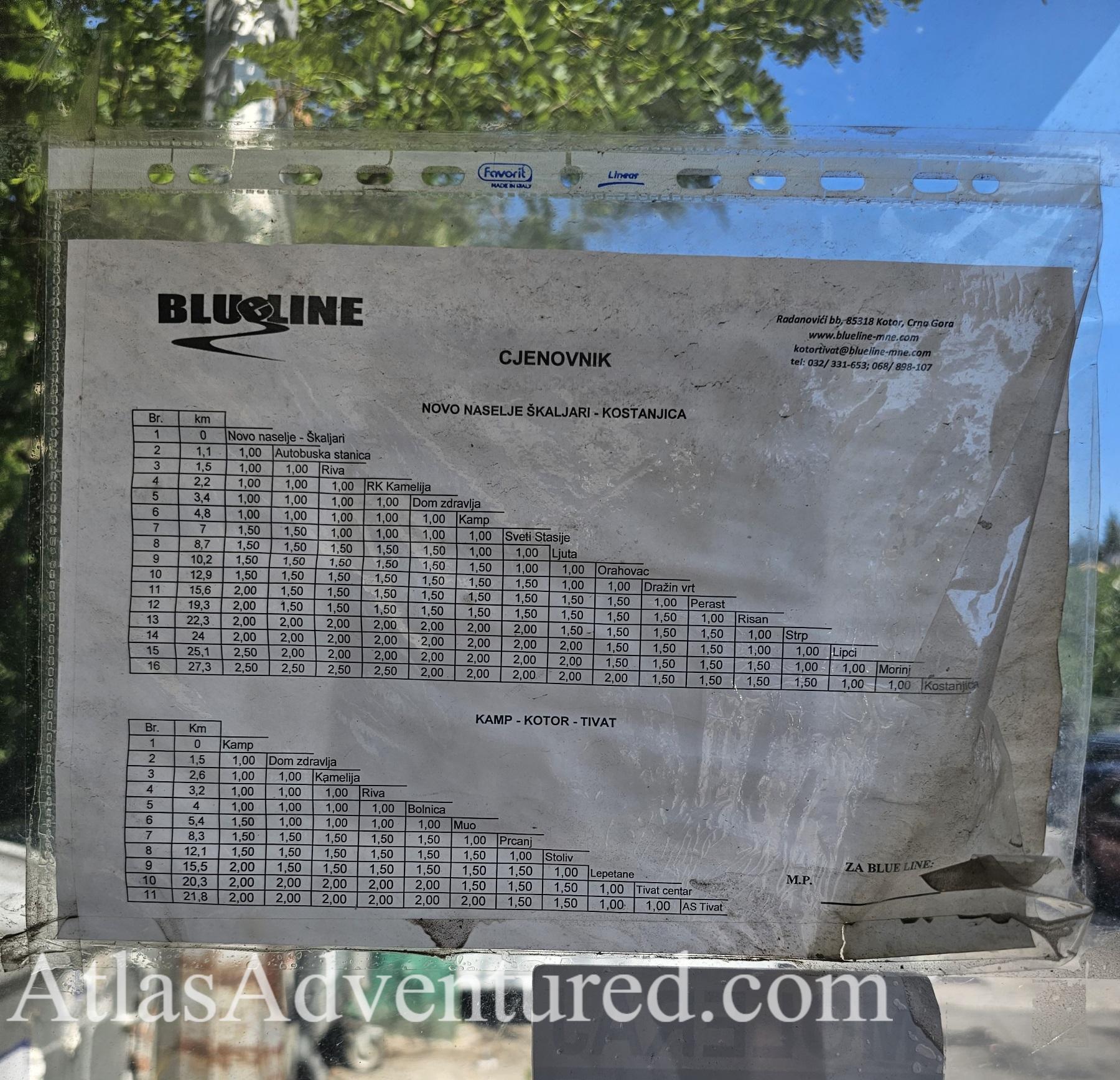
- Taxis: It is very easy to find taxis, especially in major cities. Opt for reputable taxi services to avoid being overcharged, and make sure the meter is not started until you leave, or the price is confirmed beforehand.
- Car Rentals: Our favorite mode of transportation in Montenegro! Book before your arrival, and make sure to get confirmation. Call the company to establish a point of contact in case something goes wrong. There are car rental companies at most major airports which was most convenient for us. Be sure to check parking availability with your accomodations too since parking can be a nightmare in certain areas.
Useful Apps:
- Travel Planning: Apps like Google Maps for navigation and local travel guides can be helpful for your journey.
- Language Translation: Google Translate is most widely used. Be sure to download some languages while you have WIFI to ensure you can access them offline. Montenegrin was not an available language for us at the time but we were told Serbian is the most similar and that worked out just fine for us.
- Transportation: Popular apps for taxis are Yes Taxi Montenegro and Monte Taxi.
General Tips:
- Accommodation: Choose places that are registered with the local authorities and be sure to pay the tourist tax. Ask your accommodation if it is included in the price. You could even double check with the local registration to double make sure it was paid. Read more about the Tourist Tax below.
- Local Interactions: Montenegrins are known for their hospitality. Our stay host made us feel like family, and made us feel safe and comfortable. Not everyone will be like this, but if you talk to the locals, you’re bound to make a new friend.
- Money: Cash is King! Cash is widely used, especially in more rural areas, so always have some on hand.
Remember, these tips are meant to enhance your travel experience and ease your mind!
Safety Tips for Families with Children
Embarking on a family adventure to Montenegro can be an exciting and memorable experience! We’ve traveled the world with our daughter, and felt that Montenegro was one of the safest places we’ve been to. Majority of the people are super friendly and adore children. Our stay host and our daughter instantly bonded, making Montenegro my 4 year old’s favorite place.

If you are reading this and you’re anything like me, then I’m sure you’ve scoured the internet about the ins and outs of Montenegro, needing to know that it’s a safe place for children. I hope this has helped you. Now just because we had a great time, doesn’t mean that that will happen to everyone. Here are some tips to ensure your family trip goes smoothly.
General Safety
- Stay Vigilant in Crowded Places: Always keep your children, and your belongings close and secure. I am always holding my daughter’s hand, or offering to put her on my shoulders. I’d rather lose my backpack than my child.
- Choose Child-Friendly Accommodations: Opt for hotels or rentals that cater to families and offer amenities such as cribs or play areas. Read the reviews and look for families that have stayed there.
- Be Cautious with Food and Water: Stick to reputable restaurants and ensure water is safe for drinking. Most tourist areas has safe drinking water, but carry a water bottle just in case.
- Protect Against Bugs: Use insect repellent and appropriate clothing to prevent bug bites. Mosquitoes are prevalent in Montenegro.
- Safe Outdoor Activities: When playing outside, hiking, or biking, use proper gear and consider a local guide.
Safety Tips for Outdoor Activities:
- Rafting: If you’re planning to go rafting on the Tara River, ensure that the operator provides well-fitting helmets and life jackets for everyone and that they are worn properly.
- Hiking: Stick to well marked trails and consider a local guide. Always tell someone that you are going, and be sure to carry a first aid kit and plenty of water.
- Beach Safety: Ensure that your child is supervised at all times, especially when near the water. Try to stick to beach clubs where a lifeguard is on duty, and bring any water safety gear you will need for your child.
Child-Friendly Attractions:
- Kotor Old City: A UNESCO World Heritage site, the old town is a maze of cobbled streets, historic buildings, and charming squares filled with shops and restaurants. It’s the perfect place for exploring with kids.
- Lake Skadar: Take a boat ride and enjoy the scenery and wildlife. It’s a relaxing day for the whole family. Many tours are available.
- Lovcen National Park: Home to the mausoleum of the famous poet and ruler Peter II Petrovic Njegos, it is also home to Mount Lovcen which offers panoramic views across the country.
- Aquarium Boka: Boka Aquarium in Montenegro offers an engaging and educational experience for families, showcasing the diverse marine life of the Adriatic Sea. Kids will enjoy interactive exhibits and the opportunity to learn about marine conservation.
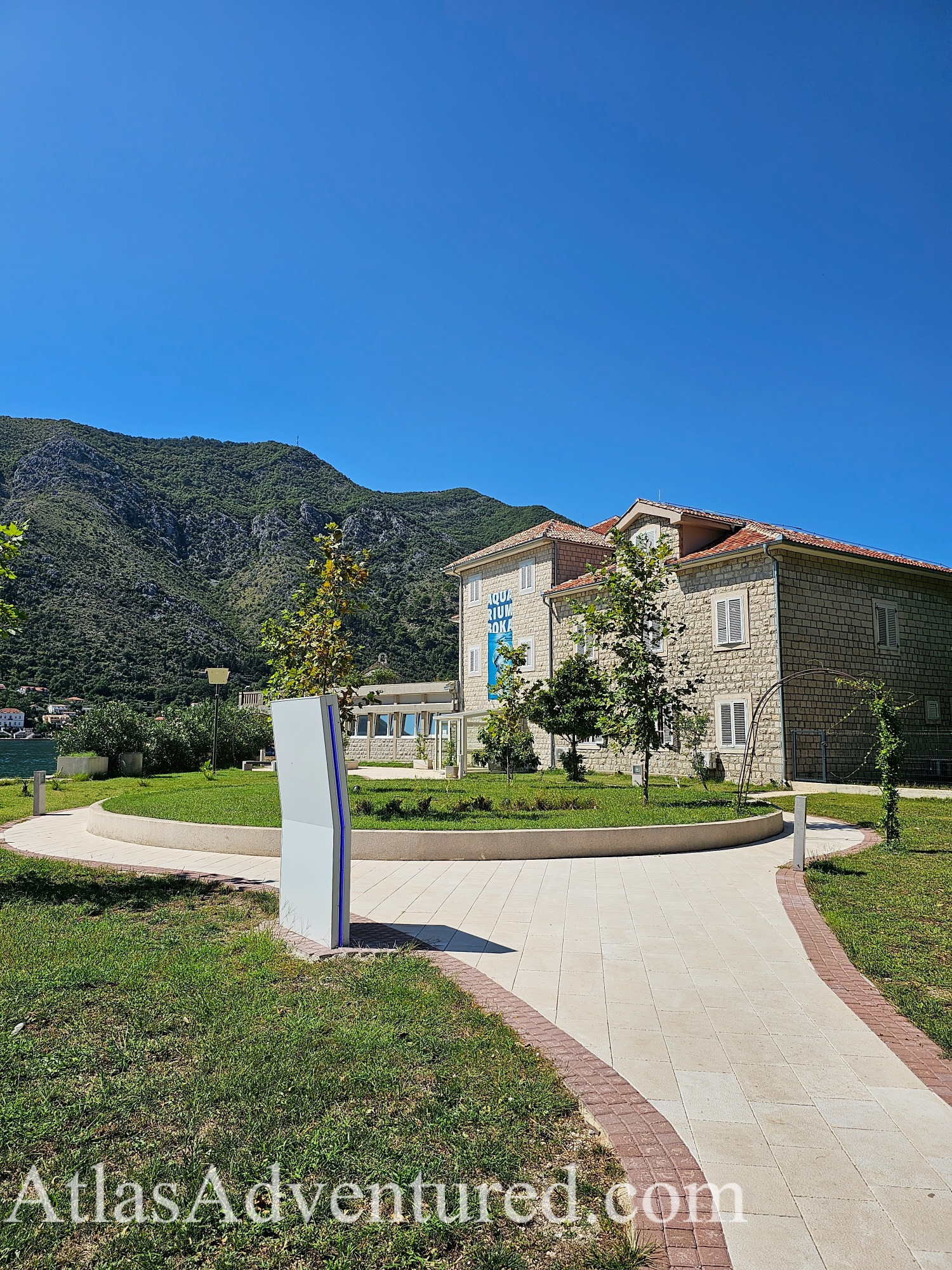
Restaurant Dining with Kids
- Choose Reputable Restaurants: Do your research and find eateries with high reviews and are known for their cleanliness and service.
- Be Mindful of Allergies: If your child has food allergies, communicate this clearly to the staff and check the food yourself. If ever in doubt, bring some extra snacks, or leave!
- Stay Hydrated: Make sure the water is safe to drink, and if in doubt, request bottled water.
- Keep an Eye on Alcohol Consumption: Montenegrin spirits can be strong. Drink moderately especially when with your child.
I hope your family vacay to Montenegro is as memorable as ours was. Let me know in the comments below what your children loved about this beautiful country!
Cultural Etiquette and Local Laws
It is crucial to familiarize yourself with the local laws and customs when traveling to Montenegro or any new destination. What may seem like routine behavior at home could potentially lead to penalties or incarceration in a different cultural context. The more you know!
Cultural Etiquette:
- Hospitality: Montenegrins are known for their warm hospitality. It’s customary to greet with a firm handshake and maintain eye contact. In formal situations, a slight bow is a sign of respect.
- Dress Code: Modesty is valued, especially in religious and rural areas. Keep your shoulders covered and avoid bottoms that fall above the knee.
- Tipping: While tipping is becoming more common, it is not mandatory. I always tip when great service is received, and it was always greatly appreciated. Small change is usually kept in smaller establishments, and up to 10% is more normal at high end restaurants.
Local Laws and Regulations:
- Driving: Drive on the right side of the road and adhere to speed limits and traffic laws. Seatbelts are mandatory and using your cell phone while driving is illegal.
- Nature Conservation: Respect the environment. Follow trails in national parks, don’t litter, and avoid getting too close to wildlife. There are severe consequences for damaging a natural site.
- Social Customs: You should address people using titles and last names. Punctuality is valued and respect personal space.
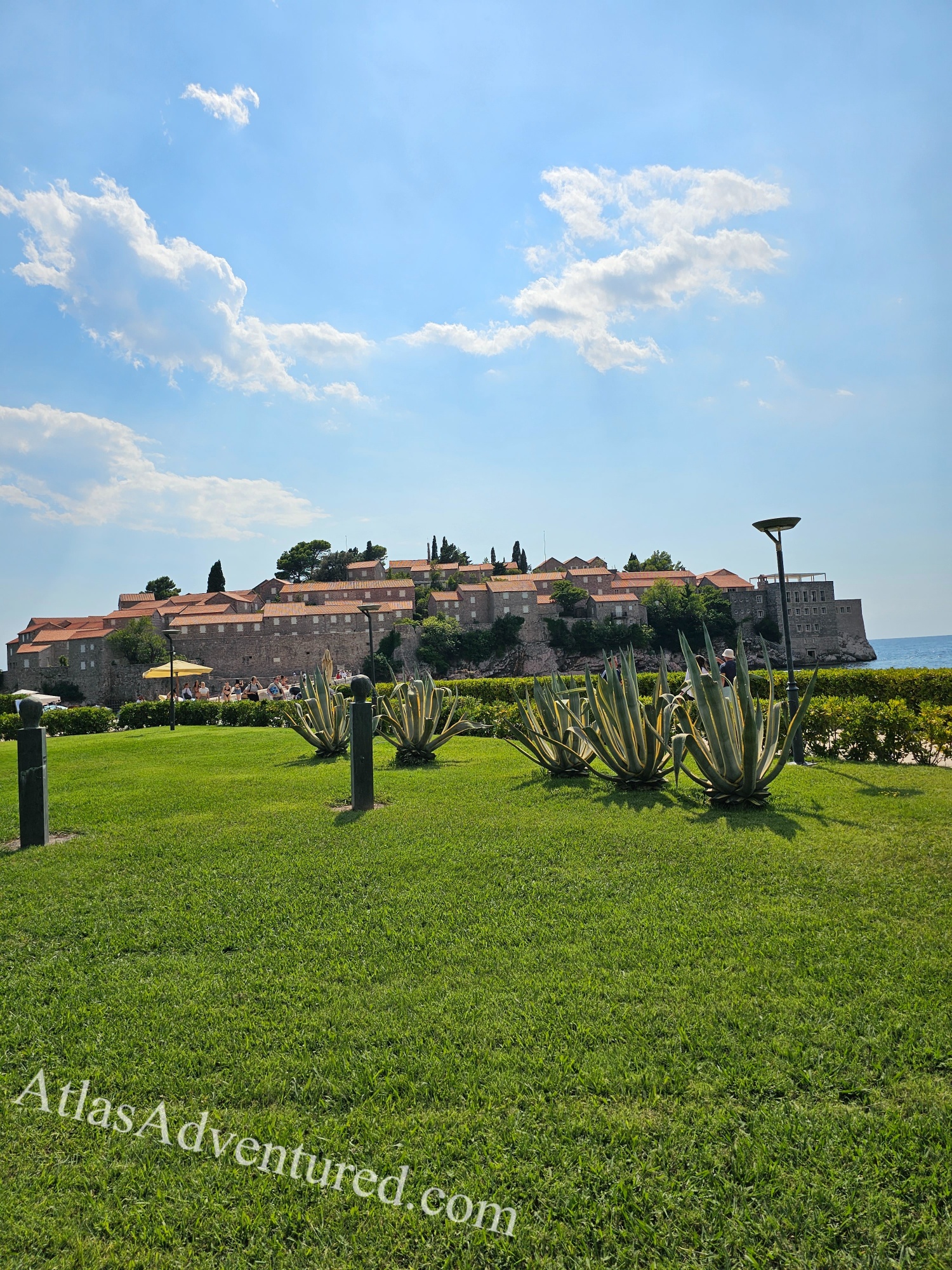
Tourist Tax:
In Montenegro, visitors are required to pay a tourist tax. This fee is generally set at 1€ per person per day in popular areas such as Budva, Tivat, and Kotor. In smaller towns like Herceg Novi or Ulcinj, the tax may be reduced to 0.90€ or 0.70€. Children aged 12-18 are charged at half the standard adult rate. Kids under 12, people with disabilities, property owners and their family, and visitors staying for over 90 days with a visa, are not required to pay the tax.
You can pay the tourist tax at post offices, banks, or select travel agencies. Most buildings will have a sign on it that says “Pay Tourist Tax Here”, or something along those lines. For those staying in hotels, the charge is typically included in the room rate, but I recommend verifying this with your stay, or checking with one of the tourist tax locations.
More to Be Aware Of:
- Assuming Promptness is Universal: The Montenegrin phrase “samo polako” means to “take it easy”, reflecting a more relaxed approach to life. Don’t expect everyone to have the same sense of urgency you’re used to at home.
- Misunderstanding Leisure as Laziness: Montenegrins value leisure and relaxation, a cultural trait to enjoy life’s moments rather than rush through it..
- Smoking Norms: Despite official bans, smoking is still prevalent in public places. Everyone smokes.
In Conclusion
I hope after reading this you now feel more prepared and confident about traveling to Montenegro. Whether you’re venturing solo or with loved ones, Montenegro’s stunning landscapes and rich culture await you with open arms. With the tips and advice we’ve shared, you’re now equipped to navigate this beautiful Balkan country with ease and peace of mind. Pack your bags, embrace the adventure, and remember that a well-informed traveler is a safe traveler. Montenegro’s charm and warmth are ready to be a part of your core travel memories! Safe travels!
Share your thoughts and tips in the comments below!

